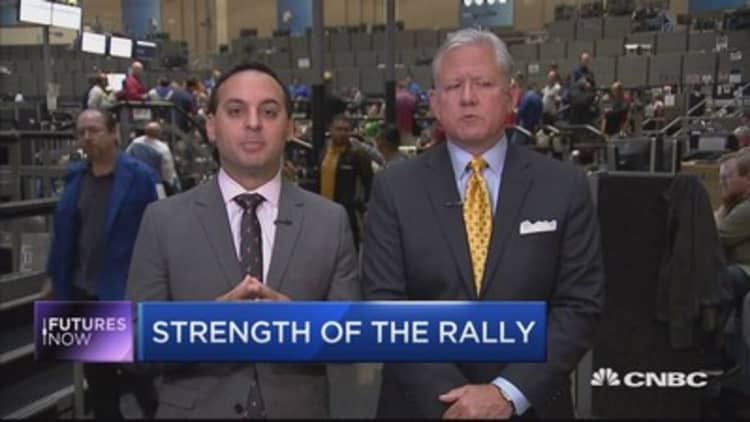
One of Wall Street's most respected market watchers is raising the odds of a market melt-up.
According to Yardeni Research's Edward Yardeni, there's now a 55 percent chance the market will continue climbing. He raised it a notch from 50 percent, a number he settled on about two months ago.
The scenario would be a short-term boost for stocks, but it's also considered an ominous sign.
"A melt-up to a certain extent kind of creates its own demise. To the extent that this market continues to move higher, maybe starts to move higher at a faster pace, now that would indicate to me that a lot of investors are coming in a little late into this bull market, and doing it with ETFs," Yardeni said Tuesday on CNBC's "Futures Now." "As in 1987, they could create a sort of portfolio insurance effect where suddenly something happens."
He's referring to the crash on Oct. 19, 1987, otherwise known as Black Monday. It's the day the Dow plummeted by 23 percent after early computers on Wall Street spotted market weakness and tried to protect financial institutions by selling. But they weren't sophisticated enough to stop.
The Dow regained the losses within about 15 months.
Yardeni said it's unclear what could take the market off the rails this time.
"Maybe the Fed will turn a lot more conservative about the bubble aspects of the market — at least rhetorically try to talk it down. Then if it starts to unwind the ETF positions, you could get something like 1987 all over again," he said.
The has closed in all-time high territory 43 times this year. It's now up 19 percent since November's presidential election on hopes the Trump administration will get tax cuts and other business-friendly policies passed.
"I'm not holding my breath because I do like to breathe. I'm not convinced we're going to get much out of Washington. There's just too much bipartisan division as opposed to agreement," Yardeni said. "The global economy is really what's driving this stock market higher. And, earnings and revenue are moving higher because the global economy is doing so well."
For now, Yardeni is forecasting the S&P 500 should be within the 2,600 to 2,800 range by June. That would be about a 2 to 9 percent gain from current levels.
"''87 wasn't the end of the world. It was actually a great buying opportunity," Yardeni said.



